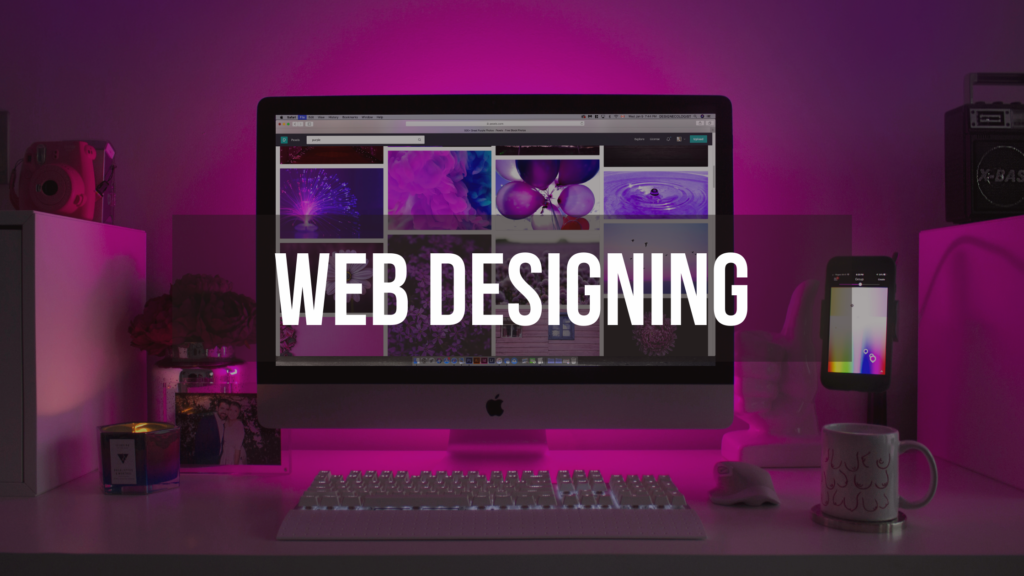Every organisation is seeking for strategies to establish an online presence.If you want to stand out in this digital world creating web designing is a great way to start.
Knowing how to create websites is a skill that designers must now possess in order to survive in today’s environment. Although it can be challenging and complex, web design is becoming more and more simple thanks to advances in technology and the Internet.
Everyone can become a fantastic web designer on their own thanks to the Internet’s wealth of materials. I’ll give you a brief tutorial on how to learn web design at home in this article.
Table of Contents
Let's See What is Web Design?

Young or inexperienced designers frequently misunderstand the idea of web design. The term “web design” describes the layout of websites that are seen online.
Instead of software development, it typically refers to the user experience components of website development. As a result, many web designer use tools like Mockplus, Figma, or Sketch, using this tools even someone without any technical experience may become a fantastic web designer.
Although knowing some coding languages (such as HTML, CSS, or Java) would be ideal, you can’t immerse yourself in front-end programming because that isn’t the heart of web design. Interaction and visual design are the foundation of websites. It tries to fix the information on web pages and user communication issues.
Types of Web Designing
Different categories are used to categorise web design. The most popular types of web design include e-commerce, dynamic, responsive, and static.

1.Static web design– The simplest style of web design is called static, and it often consists of a few simple pages with text and images.
2. Dynamic web design– The complexity of dynamic web design increases the level of interaction between the user and the website.
3. Responsive web design– A more recent style of web design is responsive. It enables the viewing of websites on a wide range of devices, from smartphones to desktop PCs.
4. eCommerce web design– eCommerce web design is a specific form of website development that enables online transactions.
What abilities are required of web designers?
- Learn the fundamentals of visual design.
The practise of enhancing a web page or mobile application’s UI and UX using visual components and effects, such as colours, artwork, photography, typography, layouts, and white spaces, is known as visual design.
It emphasises the aesthetic effects of web/app design more than UI design and tries to engage users. As beginning, you should keep the fundamental principles of size, visual hierarchy, balance, contrast, and gestalt in mind if you want to have a great visual design. These ideas can enable you to generate engagement and boost usability.
- The study of layout design
The process of positioning visual elements on a page, such as text, photos, and shapes, is known as layout design. In order to produce a seamless message flow and maximum performance, a website’s layout design is crucial. It can impact the overall appearance and connections between graphic elements on the page.
- To become familiar with color theory
It is crucial to consider colour schemes when designing a website since they can provide visitors with a variety of experiences and visual contrasts. Do keep in mind the fundamentals of colour, as they can assist you in developing successful colour schemes for your website.
- To get proficient in interface design fundamentals
The goal of interaction design is to develop engaging user interfaces with thoughtful actions. To develop a user-friendly experience for your visitors, web designers need to have a foundational understanding of interaction design, including creating design strategies, identifying essential wireframe interactions, and prototyping interactions.
- To get proficient with a design and prototyping tool
You can choose from a variety of prototype and design tools to build your website. As starters, you should pick a tool that is simple to use and has a variety of built-in components so that you can rapidly acquire a first view of your future website. With Mockplus, you can validate your ideas right away without having to wait for the final screen design.
- To comprehend the fundamentals of coding (HTML, CSS)
You don’t need to dive deep into front-end development because, as was previously stated, web design is not software development. However, having a rudimentary understanding of programming enables you to work more effectively with developers as a designer. Here are some of the top and cost-free internet resources for learning coding.
- Know your company's product and target market well
Whether you are a novice or experienced designer, the goal of your design is to communicate to customers the value of your service or product. So having a distinct persona and producing designs that satisfy your clients’ expectations is the final but not least ability for a designer.
How is Web Designing different from Website Development?
There are two basic methods for building websites: web design and web development.
Although both are significant, they are significantly distinct from one another.
In web design, the site’s appearance and feel are everything. It’s the user experience and the visual components.
A excellent web design will be intuitive to use and visually appealing.
On the other hand, web development is all about the code that powers the website.
The code on the back end is what makes everything work. A competent web designer can make a website that is quick, safe, and simple to use.
Which one then is best for you?
Your hobbies and skills will determine this.
Web design can be the career for you if you enjoy design and have a creative flair.
If you enjoy coding and are technically oriented, web development is a better fit.
Five basic Components of Web Designing
Web design can be the career for you if you enjoy design and have a creative flair.
If you enjoy coding and are technically oriented, web development is a better fit.

1. Overall layout
A key element of web design is the overall appearance of your website. Research reveals that
Users establish an opinion of your website or company in just 50 milliseconds, and that opinion will influence whether they remain or leave. To create a great overall layout, you must maintain your design straightforward, tidy, and easily accessible. You should also employ grid-based designs to keep design elements arranged and in order.
2. Color scheme
The majority of inexperienced designers begin with the color scheme and fonts on their websites because they will directly affect the perceptions of your visitors.
Are you unsure of the best color scheme to use? Simply turning to your brand or industry perspectives, combined with the demographics of your target audience, will help to reduce your workload and make this procedure reasonably pleasant.
3. Typography
Making your text readable is important when it comes to typography or font design, so the body content should typically be at least 16 pixels in width. For headings or accents, it is great to use a complementing font, but refrain from using more than three typefaces or making pointless size changes.
4. Navigation
The way visitors utilize and interact with your website or products is significantly influenced by the navigation.
The practice of developing, evaluating, and putting into practice methods for users to navigate across a website or app is known as navigation design. Just take a moment to position your navigational components correctly on your website; they may be found in the header, body, and footer and only serve to rapidly guide users to the content they’re looking for.
5. Content
Your website needs content to be trustworthy and able to give top-notch goods and services after you’ve finished with the layout, colour scheme, typefaces, and navigation design. Efficiency is essential since using too many words can obstruct your message and dilute the fundamental benefits of your brand. So, keep it brief and to the point if you want to organised and inform your audience.
Conclusion
A well-designed website has many advantages, such as a better user experience, more traffic, and higher conversion rates.
Make a strong first impression on potential consumers and stand out from the competition with a well-designed website.
Making a wise business investment in web design can pay dividends in the long run.




Pingback: What is ChatGPT: An Introduction to the AI-powered Chatbot -
Pingback: 5 Popular Indian Affiliate Marketing Platforms for Beginners -
Pingback: Mastering the Basics: Digital Marketing for Beginners -